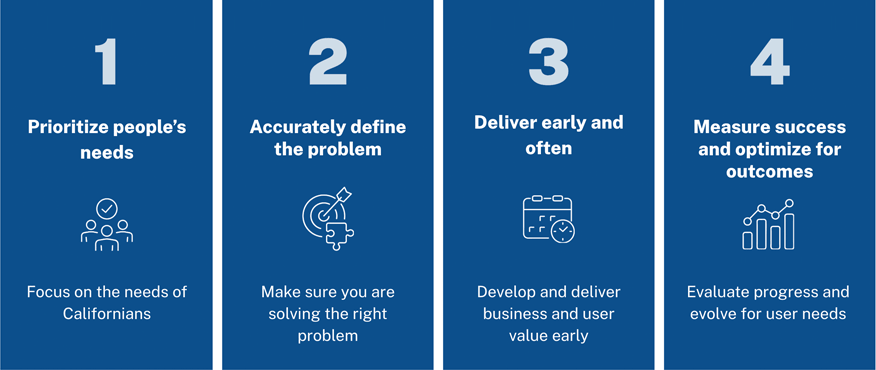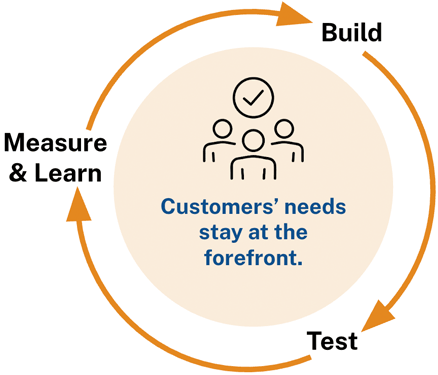
Providing exceptional customer service for Californians begins with understanding the needs of the people we serve. At the Office of Data and Innovation (ODI), we work with other state departments to help provide better services through training, research, data analysis, and human-centered design. Our latest CalAcademy course for the state workforce is Introduction to a product approach for the public sector. It gives state employees the training in innovative skills they need to adopt an iterative approach to service delivery.
What is a product approach?
In the public sector, products aren’t just websites or apps. They’re also policies, programs, processes, and services that solve problems and deliver long-term impact.

A product approach means:
- Measuring success and making improvements based on real feedback
- Putting people’s needs at the center of everything we build
- Understanding the problem before jumping to solutions
- Delivering value early and continuously
This new course breaks down four key principles to help teams apply this mindset in their own work, whether that’s streamlining a form, launching a new service, improving an existing program, or updating a policy.
Why it matters
People expect government services to work the first time, be easy to use, and reflect their real-life needs. By following a product approach, state teams can deliver faster, more accessible, and more effective services. This method also helps reduce risk and builds trust with the public through early wins and continuous improvements.
Foundations of a product approach
The course walks through:
- How to measure outcomes–not just outputs–and make improvements over time
- How to prioritize people’s needs by building empathy and listening to people affected
- Ways to define the right problem–before building the solution
- How to deliver early prototypes, minimum viable products (MVPs), and feedback loops

Whether you’re working on digital services, public-facing processes, or internal tools, this course gives you a practical starting point to create real impact.
Chief Innovation Training Officer Anne Crew-Renzo shared the opportunity and value add to this course.
“A product approach can make your services even more impactful for Californians. When you start with people’s needs – instead of solely project requirements – you increase the chance you’ll solve the right problem at the right time. A product approach is a great addition to the public servant’s toolkit!”
Service Innovation Deputy Director Koji Kumpulainien emphasized how the training helps teams design with empathy and adapt to evolving public needs:
“Across California’s government, public servants are deeply committed to making a difference. This training builds on that foundation—giving teams a new way to design with empathy, deliver with purpose, and stay focused on the real needs of the people we serve. By using a product approach, we can move from one-time projects to services that grow and adapt as people’s needs change.”
Start learning today
Available through CalLearns, Introduction to a product approach for the public sector is free to all State of California employees. With manager approval, you can enroll and earn a certificate of completion in your CalLearns profile.
Curious about how a product approach could change the way you work? Visit the course page on CalLearns to learn more.